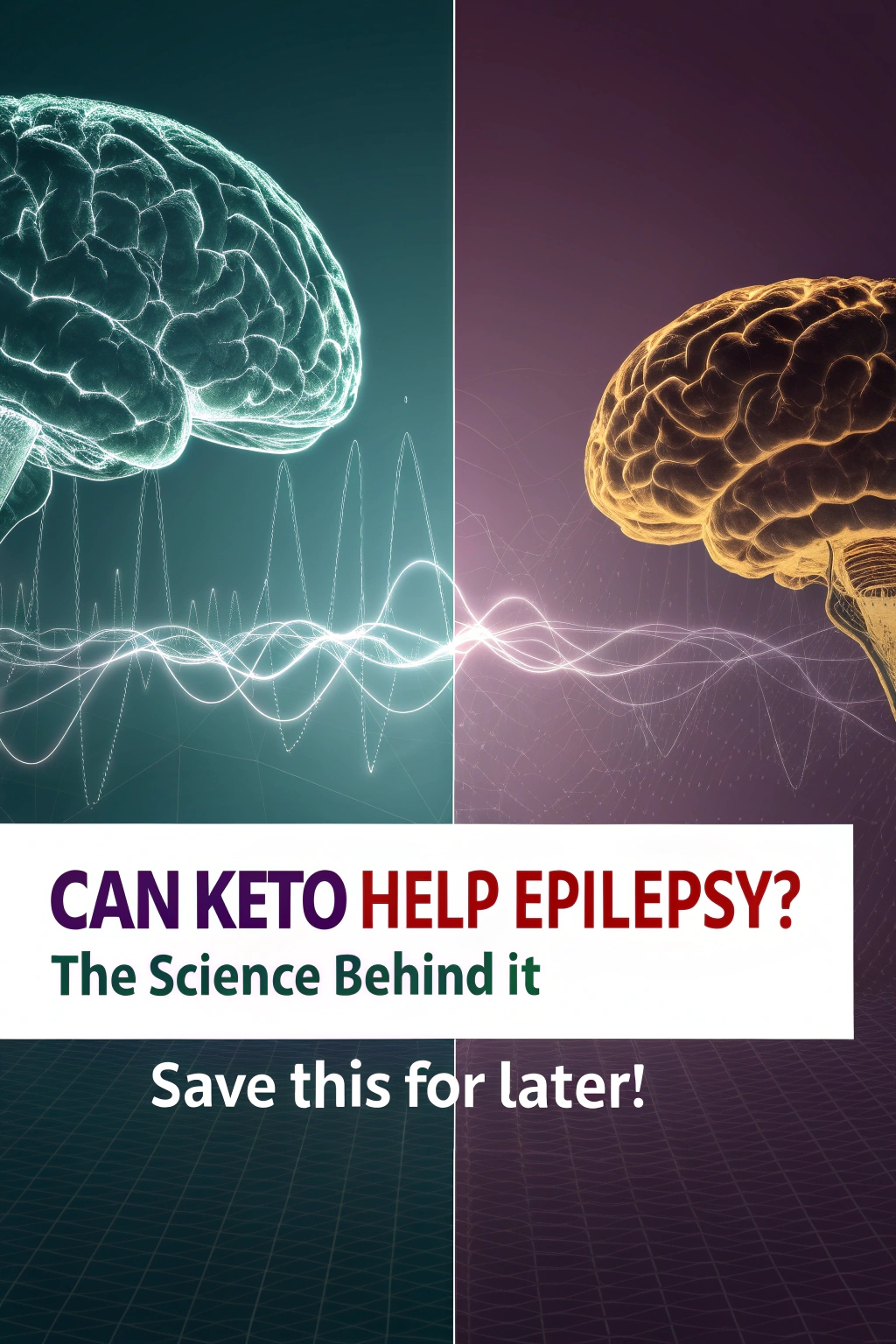Understanding The Ketogenic Diet Epilepsy: A Comprehensive Guide
⚠️ IMPORTANT SAFETY WARNING: The Ketogenic Diet epilepsy is a specialized medical treatment. It MUST be initiated, managed, and monitored under the close supervision of a qualified medical team (neurologist, registered dietitian experienced in therapeutic ketogenic diets). DO NOT attempt this therapy on your own. This information is for educational purposes ONLY.
While widely known for weight loss, the Ketogenic Diet holds a significant, decades-long history as a powerful medical therapy for managing epilepsy, especially when medications aren’t enough. If you’re searching for information about the ketogenic diet for epilepsy or keto diet for epilepsy, you’re exploring a recognized therapeutic approach that has helped thousands of patients achieve better seizure control.
This comprehensive guide explains what the epilepsy diet involves, its fascinating history, the science behind how it might work, the specific diet types used in clinical practice, and why professional medical guidance is absolutely essential for safety and effectiveness.
Table of Contents
The Surprising History: How Keto Became an Epilepsy Treatment
The connection between fasting and seizure reduction dates back to ancient times, but the modern ketogenic diet for epilepsy was formally developed in the 1920s at the Mayo Clinic. Physicians observed that fasting appeared to reduce seizures in some epilepsy patients, and they sought to create a sustainable diet that could mimic these effects.
Dr. Russell Wilder at Mayo Clinic coined the term “ketogenic diet” and began using it to treat epilepsy in 1921. The diet gained significant popularity as a treatment for childhood epilepsy throughout the 1920s and 1930s.

During this pre-medication era, the ketogenic diet was one of the few effective treatments available. Its use declined with the introduction of effective anti-seizure drugs (ASDs) like phenytoin in the late 1930s, as medications were easier to administer than the strict dietary protocol.
The diet experienced a remarkable resurgence in the 1990s, partly sparked by the story of Charlie Abrahams, whose severe epilepsy was successfully controlled with the ketogenic diet after medications failed. His father, Hollywood producer Jim Abrahams, established the Charlie Foundation to promote ketogenic therapy research and awareness.
Today, the keto epilepsy treatment is recognized worldwide as an effective option for drug-resistant epilepsy and specific epilepsy syndromes, with dedicated ketogenic diet programs in major medical centers across the country.
Unlocking the Mechanism: How Might Keto Help Control Seizures?
The exact science behind how the ketogenic diet helps control seizures is complex and still being researched, but several potential mechanisms have been proposed:
- Brain Fuel Shift: When following a keto diet for epilepsy, the body produces ketones (beta-hydroxybutyrate, acetoacetate, and acetone) that become the brain’s primary energy source instead of glucose. This metabolic shift appears to have stabilizing effects on brain activity.
- Neurotransmitter Balance: The diet may increase levels of GABA (gamma-aminobutyric acid), an inhibitory neurotransmitter that calms brain activity, while decreasing glutamate, an excitatory neurotransmitter. This rebalancing can potentially reduce seizure activity.
- Cellular Stability: Ketones may help stabilize neuronal cell membranes and influence ion channels, potentially reducing the electrical discharges that lead to seizures.
- Anti-Inflammatory Effects: The ketogenic diet appears to reduce neuroinflammation, which may contribute to seizure activity in some forms of epilepsy.
- Mitochondrial Function: Improved mitochondrial function and energy production in brain cells may help prevent the energy failures that can trigger seizures.
Most researchers believe it’s likely a combination of these mechanisms rather than any single factor that contributes to the diet’s anti-seizure effects.
Not Just One Keto: Types of Therapeutic ketogenic Diet Epilepsy Used
Therapeutic keto diets are much stricter and more calculated than typical “lifestyle” keto. Healthcare providers may recommend different versions based on individual patient needs:

1. The Classic Ketogenic Diet (KD)
The traditional and most restrictive approach uses a strict ratio of fats to proteins and carbohydrates combined, typically 4:1 or 3:1 by weight. This means for every 4 or 3 grams of fat, there is only 1 gram of protein and carbohydrate combined.
This version requires meticulous food weighing and calculation of every meal and snack. It’s often initiated during a hospital stay under medical supervision and has historically been used primarily for children, though adults may use it too.
2. Modified Atkins Diet (MAD)
This less restrictive approach limits net carbohydrates (typically to 10-20 grams per day) while encouraging high fat intake. Protein is less restricted than in the classic KD. The MAD is easier to implement and is commonly used for adolescents and adults with epilepsy.
Studies show it can be effective for seizure control while being more manageable in daily life than the classic approach.
3. Low Glycemic Index Treatment (LGIT)
This version focuses on consuming carbohydrates with a low glycemic index (GI) value of less than 50, keeping total carbohydrate intake to 40-60 grams per day. It allows for slightly more carbohydrates than other versions but emphasizes carbs that produce smaller changes in blood glucose.
4. MCT Oil Diet
This variation incorporates Medium-Chain Triglycerides (MCT), which produce ketones more efficiently than other fats. Because of this efficiency, the diet can allow slightly more carbohydrates and protein while maintaining therapeutic ketosis.
The specific diet protocol is chosen by the medical team based on individual needs, including age, seizure type, lifestyle factors, and other medical considerations.
Is Therapeutic Keto Right? Identifying Potential Candidates (Medical Decision)
Only a qualified medical team can determine if a therapeutic ketogenic diet is appropriate for an individual. Common situations where it might be considered include:

- Drug-Resistant/Refractory Epilepsy: When at least two appropriate anti-seizure medications have failed to control seizures adequately
- Specific Epilepsy Syndromes: Particularly effective for conditions like GLUT1 Deficiency Syndrome, Dravet Syndrome, Doose Syndrome (Myoclonic-Astatic Epilepsy), and Infantile Spasms
- Special Cases: Sometimes considered earlier in treatment for certain patients when benefits may outweigh risks
The diet is used across age groups, from infants to children, adolescents, and adults, though the specific approach may vary based on age and individual needs.
⚠️ Why Medical Supervision is Absolutely NON-NEGOTIABLE
Attempting to implement a therapeutic ketogenic diet for epilepsy without proper medical supervision carries significant risks:
- Nutrient Deficiencies: The restrictive nature of the diet can lead to deficiencies in vitamins, minerals, and other nutrients without proper supplementation identified by a specialized dietitian.
- Potential Side Effects:
- Short-term: The “keto flu” can be especially intense in therapeutic protocols and may include fatigue, headaches, and irritability
- Long-term: Risks include kidney stones, elevated blood lipids, growth issues in children, constipation, bone health concerns, and potential cardiovascular impacts
- Precise Monitoring Required: Regular testing of ketone levels (blood testing is preferred over urine), blood glucose, lipid panels, electrolytes, and nutritional status is essential for safety
- Diet Initiation & Titration: The diet typically requires careful introduction and adjustment to manage side effects and achieve optimal ketone levels for seizure control
- Medication Adjustments: The ketogenic diet can interact with anti-seizure medications, often requiring dosage adjustments by the neurologist
- Dietitian’s Role: A dietitian specialized in ketogenic therapy is crucial for meal planning, nutritional calculations, managing overall nutrition, and preventing deficiencies while maintaining the therapeutic effect
The complexities of balancing nutritional needs with therapeutic requirements make professional guidance non-negotiable for anyone considering this treatment approach.
What About Carnivore Diet for Epilepsy? The Current Understanding
There’s growing interest in the carnivore diet (an all-animal-products approach) for various health conditions, including epilepsy. Currently, there’s significantly less clinical research on the carnivore diet specifically for epilepsy compared to established ketogenic diets.
While the carnivore diet is zero or very low-carb like ketogenic diets, and may theoretically produce some similar metabolic effects, the lack of robust clinical data and potential nutritional imbalances make it difficult to recommend as a standard epilepsy therapy.
Any exploration of the carnivore diet for seizure control must be under specialized medical supervision, as the nutritional considerations and potential risks are significant, especially for a serious medical condition like epilepsy.
The ketogenic diet remains the evidence-backed dietary approach for epilepsy management with decades of clinical research supporting its use.
Quick Summary: Key Facts About Keto for Epilepsy
- Keto for epilepsy is a medical therapy, not a lifestyle diet
- Requires mandatory medical supervision (neurologist + dietitian)
- Specific protocols (Classic, MAD, LGIT, MCT) are used, calculated precisely
- Mainly for drug-resistant epilepsy & certain syndromes
- Monitoring & supplementation are critical for safety & efficacy
- Do not attempt alone
- Carnivore diet lacks specific evidence for this use
Taking the Next Steps Responsibly
If you or a loved one are considering dietary therapy for epilepsy, the essential first step is to discuss it thoroughly with your neurologist or epilepsy specialist. They can determine if it’s appropriate and refer you to a specialized dietitian experienced in ketogenic therapy for epilepsy.
For more in-depth medical information, consult these reputable organizations:
- Epilepsy Foundation (epilepsy.com)
- The Charlie Foundation for Ketogenic Therapies (charliefoundation.org)
These resources provide scientifically accurate information developed by medical professionals who specialize in ketogenic diet therapy for epilepsy.
Interested in learning more about the basics of nutritional ketosis for general wellness (completely separate from medical therapy)? [Visit our Keto Basics Guide], but remember that this information is distinct from the therapeutic ketogenic diet used for epilepsy management.
Connect with others navigating Keto for general health in our community [Visit our Community], but remember medical advice for epilepsy should only come from your healthcare team.
Conclusion: A Powerful Tool in the Right Hands
The ketogenic diet is a proven, powerful tool in the medical management of epilepsy for specific individuals when traditional medications aren’t providing adequate seizure control. With a century of clinical use and a growing body of research supporting its effectiveness, it represents an important option in the epilepsy treatment toolkit.
Its safety and effectiveness hinge entirely on expert medical guidance and careful implementation. Always partner with your healthcare team when considering any treatment approach for epilepsy, including dietary therapies.
Medical Disclaimer: This article is for informational purposes only and does not constitute medical advice. The ketogenic diet for epilepsy is a medical therapy that requires supervision by qualified healthcare professionals. Consult with qualified healthcare professionals regarding any medical conditions or treatments, especially concerning epilepsy. Never disregard professional medical advice or delay seeking it because of something you have read in this article.
Enjoy, Review – We Value Your Opinion!
There are no reviews yet. Be the first one to write one.

